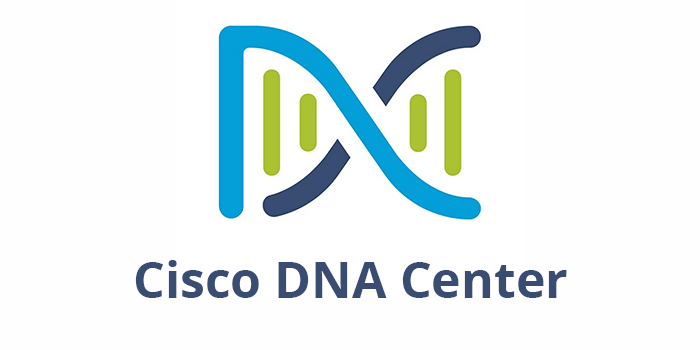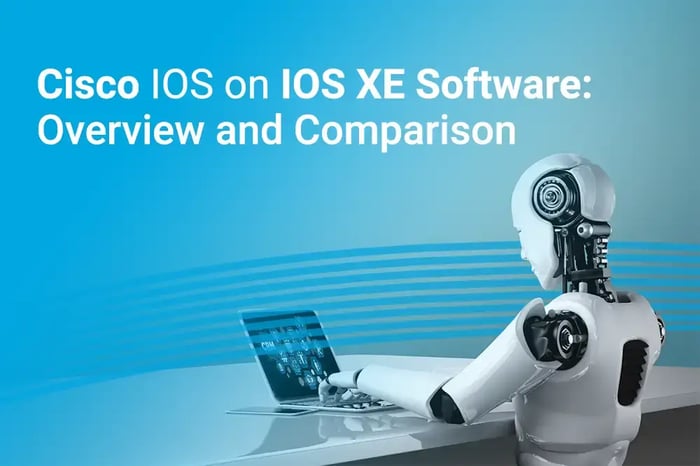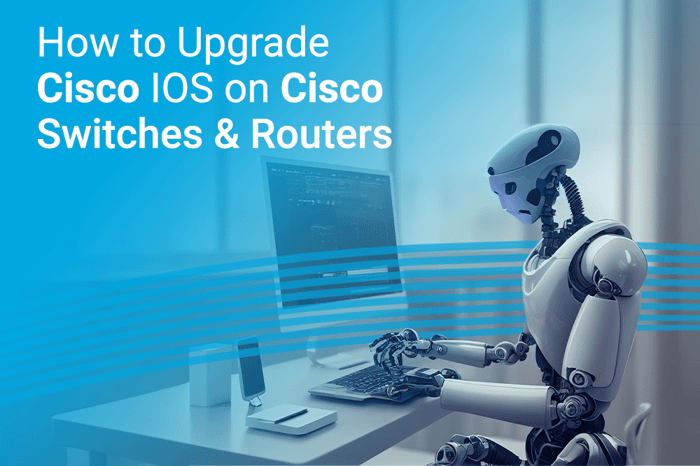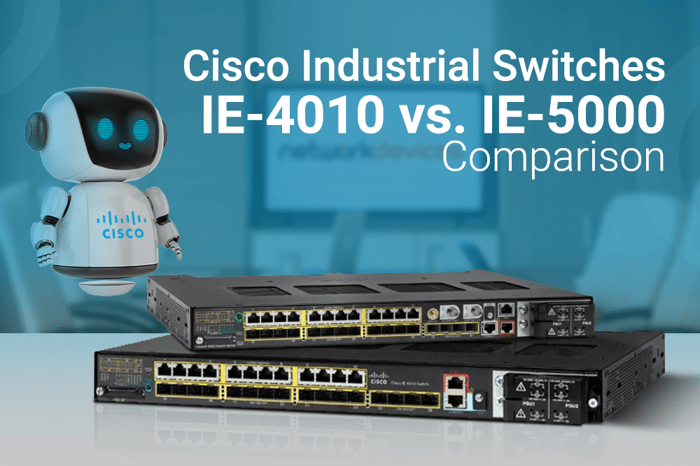You have no items in your shopping cart.

Cisco DNA Center vs. Aruba Central
The following article provides a comprehensive comparison of Cisco DNA Center and Aruba Central to better understand each platform's features, pros and cons.
Various network management systems were introduced to tackle this issue. Ultimately, Cisco DNA Center and Aruba Central are the top two names in the industry, with AI/ML and hybrid deployment options to streamline network operations. This article will review Aruba Central and Cisco DNA Center's features and capabilities and determine the best fit for your environment.
The number of devices in complex infrastructures is so large that managing and controlling them becomes a hassle. Every day, so many ACLs, security policies, new restrictions, and changes are enforced on a user basis. These changes make network and security administrator overhead extremely difficult, with no proper documentation or reporting.

Cisco DNA Center and Aruba Central are the industry's top choices for network management solutions. Their advanced features include:
· Built-in artificial intelligence technology
· NMS tools managing
· Continuous monitoring
· Centralized and granular control
· Intuitive access controls
What is Cisco DNA Center?
Cisco Digital Network Architecture or DNA is a modern hybrid NMS solution that empowers enterprises to centrally control, monitor, manage, add, configure, and get AI-powered insights from a single consolidated GUI dashboard. It is a software-based network management solution that uses automation, analytics, and security to help organizations streamline their network operations.

Key Features of Cisco DNA Center
Cisco DNA also offers Cisco IOS XE, including features like Cisco Network Plug-n-Play (PnP) and Zero Touch Provisioning (ZTP). PnP and Zero Touch Provisioning allow for easy configuration -although with a bit of time invested.
Cisco DNA Center not only provides visibility and control but also "Design." There is always some complexity associated with network designs, as the security, performance, and connectivity depend on the design and architecture. It provides an intuitive workflow to design your network, beginning with the locations where your network devices will be deployed.
Migration
Suppose you already use Cisco Prime Infrastructure or the Cisco Application Policy Infrastructure Controller Enterprise Module (APIC-EM). In that case, you can easily import your existing network designs and device images into the Cisco DNA Center. This allows for a seamless transition and the ability to leverage your current network infrastructure.

What is Aruba Central?
Aruba Central is an upgraded or advanced version of AirWave that is powered with artificial intelligence and workflow automation to manage and monitor networks of any scale, such as branch, remote, campus, data center, and IoT networks.
Enhanced protection makes it the single point to optimize daily IT operations and monitoring. It is a cloud-native monitoring solution but is also available as an on-premises system. This is again helpful for organizations with compliance restrictions to adapt cloud-native solutions.

Key Features of Aruba Central
Aruba Central is built on a cloud-native microservices architecture, which provides the enterprise-grade scalability and resiliency required for large-scale networking environments. Moreover, the solution is designed with intuitive workflows and dashboards that make it easy to use for SMBs with limited IT personnel. Therefore, Aruba Central is a perfect fit for businesses that require powerful network management capabilities but do not have large IT teams to manage them.

Aruba Central provides AI-powered insights and granular visibility into IoT devices. The AIOps feature helps administrators solve the issue without user performance impact. It gives suggestions in the form of prescriptions on optimizing which portion of the system is more efficient.
Is Third-Party or Multi-Vendor Integration Supported?
Aruba Central supports multi-vendor device integration, such as Juniper, Cisco, HP, and other networking devices. On the other hand, Cisco DNA supports third-party integrations using an open and extensible platform that allows applications and processes to exchange data.
Some Cisco KBs suggest that third-party integrations have been depreciated from specific DNA versions. This notable feature can help enterprises in the decision-making process.

Specs Comparison
Features | DNA | Central |
Hybrid Deployment | Yes | Yes |
Artificial Intelligence | Yes | Yes |
Machine Learning | Yes | No |
Multi-Vendor Support | No | Yes |
User-Friendly Operation | Yes | Yes |
Zero-Touch Provisioning | Yes | Yes |
Automated Reporting | Yes | No |
AI-Based Predictive Report | Yes | No |
Centralized Monitoring | Yes | Yes |
Automation | Yes | Yes |
Scalable | Yes | Yes |
API Support | Yes | Yes |
Recommendation and Comparison
Considering Cisco's reputation and Aruba's cloud-native approach, it's a hard choice to make, but the hard decisions are what serve for a longer, better period with a more reasonable budget.
Based on our extensive research, feature analysis, and budgetary constraints of enterprise businesses, we declare Aruba Central as the winner or choice between Cisco DNA and Aruba Central as a better, scalable, secure, automated, and reliable network management system. But why Aruba Central and not Cisco DNA?

Choosing Between Cisco DNA Center and Aruba Central
Cisco DNA is a good choice if you already have a Cisco network infrastructure and want to leverage its advanced AI/ML and automation capabilities. On the other hand, Aruba Central is designed to simplify network deployment, management, and troubleshooting. It is a good choice if you're looking for a cloud-based network management solution that supports multi-vendor environments.
Ultimately, choosing between Cisco DNA and Aruba Central depends on your specific needs and requirements.
1. Cost Factor
The cost of Cisco DNA Center and Aruba Central depends on various factors, such as the network size, the number of devices, the type of licenses, and the specific features required.
Regarding economic benefits, it's important to consider the overall cost of ownership, which includes not only the initial purchase price but also ongoing costs such as maintenance, support, and upgrades. It's also essential to evaluate each solution's features and capabilities to determine which best meets your organization's needs.

Cisco often charges more for its products and services due to its long-term reputation in the industry, which is why it is considered more expensive than other solutions. But with extra bucks, you get unparalleled features like AI/ML capabilities, automated reports, zero-touch provisionings, and so on.
On the other hand, Aruba can be considered an emerging solution provider in the NMS sector that challenges its competitors with both price and features. Aruba is likely to be less expensive than Cisco DNA when we compare subscription-based licenses and different support types.
2. Multi-vendor Integration or Support
The multi-vendor approach is another crucial advantage that organizations can leverage for centralized management, where multi-vendor appliances can be integrated, controlled, and monitored from a single glass pane and a consolidated dashboard. This is simply achievable by Aruba Central, which makes it a way ahead and is a reasonable deal when compared to Cisco DNA.
3. Cloud-Native Approach & Built-in Artificial Intelligence
Imagine an NMS solution that could offer cloud-level resiliency and pricing. Sounds interesting, right? With Aruba Central, cloud deployment is just a step away from achieving a more scalable, centralized, and secure network management solution. The out-of-the-box integrated artificial intelligence capabilities give you real-time insights on critical events, users, and network traffic, which is relatively easier than before. It further helps by offering advanced AI features like AI Search, AI Assist, and AI-powered firmware recommendations.

4. Deployment Flexibility: On-Premises vs. Cloud?
Both Cisco DNA Center and Aruba Central are available in the hybrid model. Both can be deployed in the cloud environment or implemented as a dedicated on-premises solution in the form of hardware or virtual appliance. Therefore, you can enjoy cloud-native management, cloud-native dashboard, and mobile applications if you choose the cloud-native dashboard.
When discussing Cisco DNA, it is available as a dedicated hardware appliance and only available on the AWS cloud. In contrast, Aruba Central can be implemented in a multi-cloud environment, as a dedicated hardware appliance, and as a virtual machine. Some countries do not allow their entities or organizations to store data on the cloud platform and impose regulatory and compliance restrictions. For such companies, on-premise solutions are required
5. Security
As network infrastructures continue to expand, the need to secure networks and protection against potential threats from unknown devices is increasing.

Cisco products always offer robust security. When it comes to Cisco DNA Center, you have a second option: Cisco Secure Network Analytics (formerly Stealthwatch Cloud). You will then be able to solve problems before they occur by automating the detection of malicious traffic.
Aruba Central, on the other hand, provides Zero trust security. Aruba Central Zero Trust Security empowers organizations to enforce consistent security policies across all IoT devices and networks. By implementing a zero-trust architecture, where every device is treated as potentially untrusted until proven otherwise, organizations can proactively defend against emerging threats and prevent lateral movement within their network.
6. AI/ML Capabilities
Both Cisco DNA Center and Aruba Central have unparalleled AI-powered insights that give enterprises granular visibility and control, helping make predictive analyses. The AIOps feature of Aruba Central helps administrators solve the issue without user performance impact by providing suggestions in the form of prescriptive optimization tips on which portion of the system is more efficient.

Cisco DNA Center offers AI-based predictive reports and facilitates enterprises with automation, analytics, and security functionalities. The AI-enhanced radio resource management (RRM) utilizes artificial intelligence and machine learning algorithms to develop a comprehensive understanding of the specific wireless environment. This deep understanding allows for creating targeted configuration recommendations that can enhance the Wi-Fi network's performance, coverage, and capacity.
Decision and Key Takeaways
Choosing the right network management solution depends on your specific needs and budget. Here are the key considerations to help you decide:
For Large Enterprises: If you have a distributed network system, already use Cisco appliances, and budget is not a concern, choose Cisco DNA Center.
For Budget-Conscious Organizations: If you need a cloud-based solution with AI capabilities and have a strict budget, Aruba Central is your best option.
Need expert advice? Reach out to Network Devices Inc.






